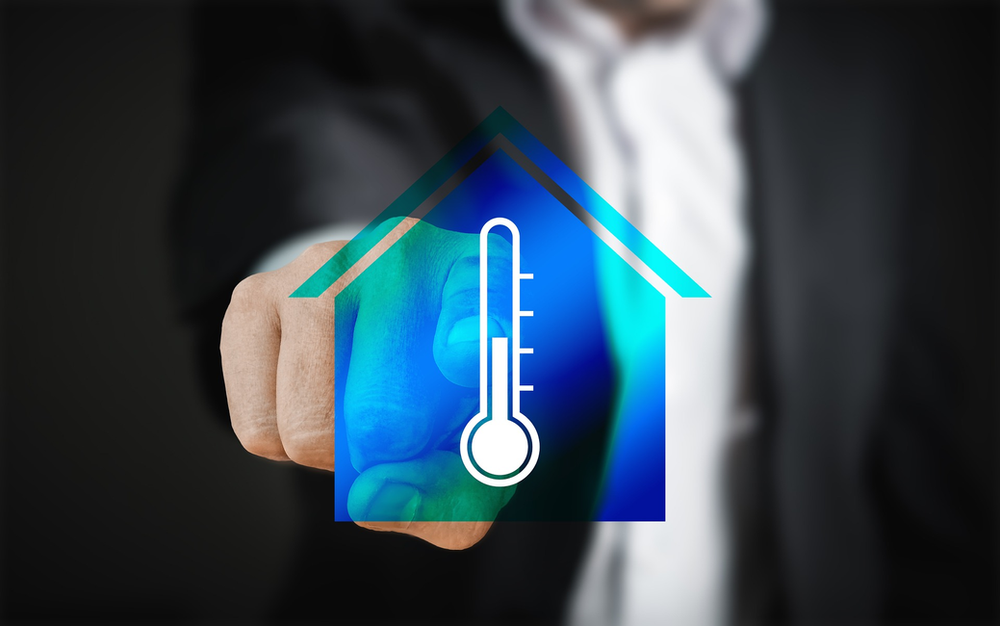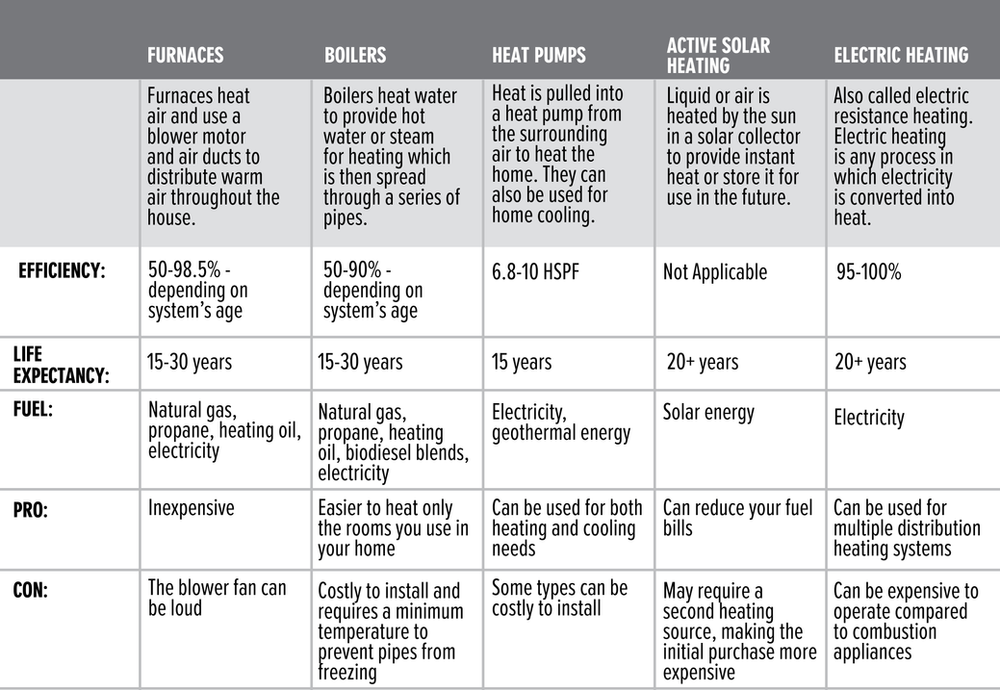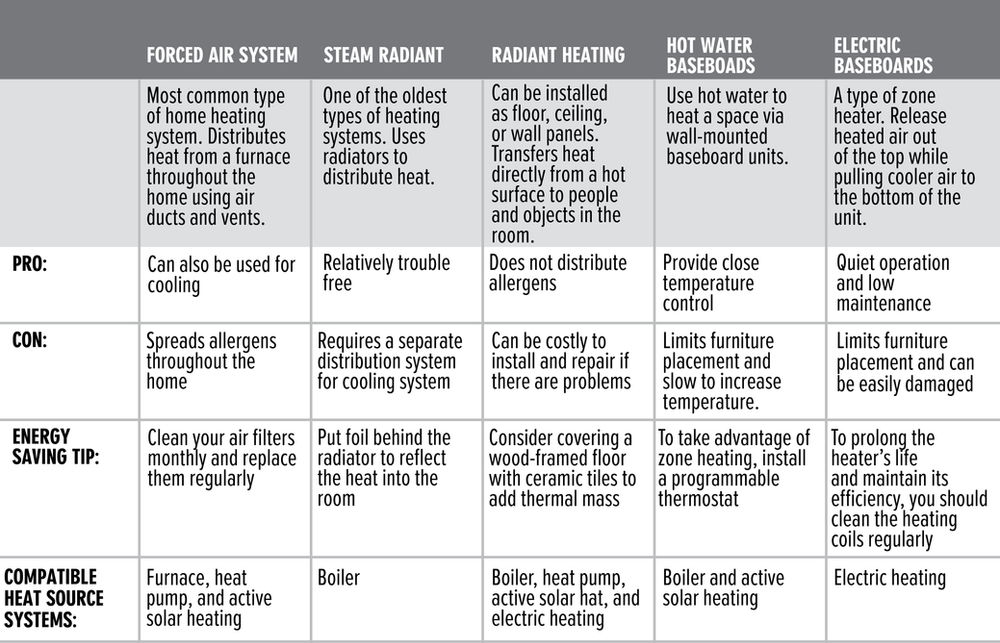
Accounting for about 45% of your energy bills, space heating is the largest energy expense in your home. Natural gas is the most common home heating fuel, being used in 57% of American homes. Between 2007 and 2012, the average U.S. household spent over $700 on heating using natural gas and over $1,700 on heating homes using heating oil.
How heating systems work
There are three basic components to all heating systems. If you notice that your heating system isn’t functioning properly, one of these basic components may be the problem.
- Heat source: Usually a furnace or boiler that provides warm air to heat the home.
- Heat distribution system: For example, forced air or radiators, which move warm air through the home.
- Control system: Most commonly a thermostat, which regulates the amount of warm air that is dispersed.
Types of heat source for heating systems

Types of distribution systems for heating systems

Types of space heaters
- Wood or pellet stoves: These are a good heating option for those who live in an area where wood is readily available. Pellet stoves are usually more efficient than wood stoves, but they can require servicing.Safety: Follow manufacturer’s instructions for installation and be sure to have your wood and pellet stoves cleaned regularly to improve efficiency and safety.n
- Portable & direct vent wall heaters: Used when the main heating system is inadequate or when central heating is too expensive to install or operate. Portable heaters can be electric or combustion.Safety: Unvented portable combustion heaters can be dangerous if not used properly – causing carbon monoxide poisoning, severe illness and even death.n
- Fireplaces: Installing a heat-air exchange system in the chimney helps blow the warm air back into the room. Safety: To be sure that the chimney is clean and that it drafts properly, fireplaces should be inspected regularly.
Selecting a heating system
- Fuel: The heating fuels that are available to you depend on where you live in the U.S. For example, heating oil is more popular in the Northeast because there is limited access to natural gas.
- Climate: The type of heating system you buy varies depending on where you live. You may only need a space heater if you live in a warmer climate, while you may need a central heating system if you live in a colder climate.
- Efficiency: Heating systems that have high efficiency are more expensive but have lower operating costs. ENERGY STAR products exceed the minimum standards for efficiency and quality.
- Size: Having the correct sizing is just as important as efficiency. It will be more expensive to operate a heating system that is too big for your home. You should work with a professional contractor to find and install the best heating system for your home.
Maintaining a heating system
- Clean filters monthly and replace them on a regular basis.
- Check air ducts and heating pipes to ensure that they are properly sealed.
- To maintain heating levels, clean the heat exchanger and remove dirt, soot, or corrosion from the system.
- Be sure that air vents, baseboard heaters, and radiators aren’t obstructed.
Tips for cutting your heating bills
- During the winter, open your curtains during the day to heat your home naturally and close them at night to keep the heat inside.
- Use a programmable thermostat to turn your heater down while you are away or sleeping.
- To help retain your home’s heat, consider air sealing your house and adding insulation to your walls. Up to 25% of the heat in your home is lost through small cracks and holes throughout your house.
- Make sure your air ducts are sealed and properly insulated when they are installed in an unheated area of the home, like an attic or crawlspace.
- To keep warm air from escaping, weather-strip around your doors and windows.
- To blow the rising hot air down, set your ceiling fan to spin clockwise.
- Be sure that your chimney is clean.
Energy Saving Tips
- Improve the efficiency of your home before you upgrade your heating system. This allows you to buy a smaller unit, which saves money on upgrade and operating costs.
- To save money on your energy bills, install a programmable thermostat. By using a programmable thermostat, you could save an estimated 10% on heating and cooling costs per year.

 H0-6 Policy – What is it and why do I need one?
H0-6 Policy – What is it and why do I need one?
Leave a Reply